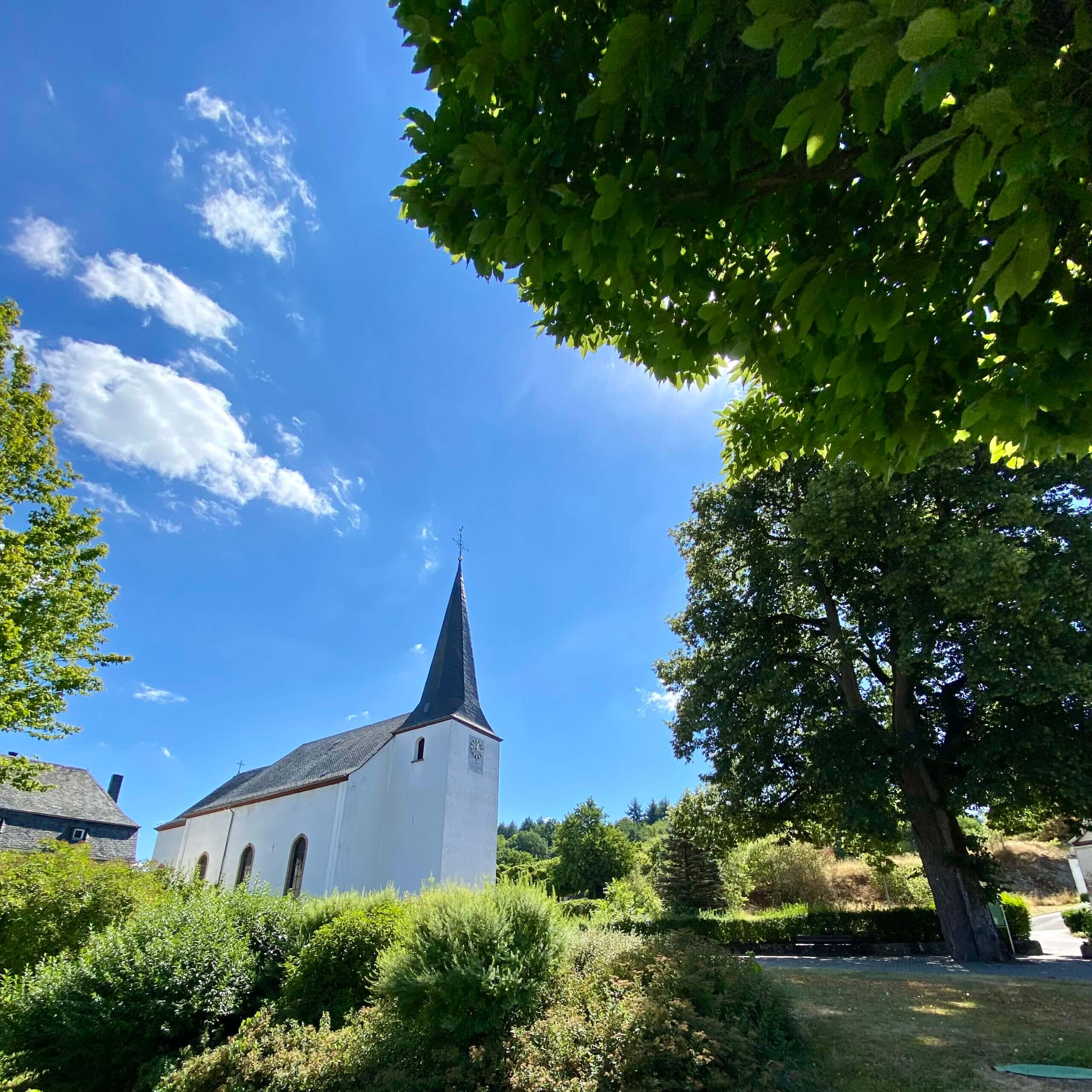St. Paulin, Bischofsdhron
Dhron, Moselle tributary at river kilometre 151
“Dhroyne” was the name given to the village on the Drohn for a long time. It probably became “Bischofsdhron” in the 14th century. At that time, the village was in the domain of Balduin of Luxembourg, Elector and Archbishop of Trier. Today the village has 850 inhabitants and is part of the municipality of Morbach.
The vicarage was completed in 1760, and between 1766-1770 the church of St. Paulin was built according to plans by Johannes and Andreas Seitz. The court architects in the Electorate of Trier are regarded as master students of Balthasar Neumann. The present church stands on the foundation walls of a Romanesque church. The high altar is baroque, as are the two side altars. To the left of the altar is the figure of Bishop Paulinus, the parish patron of the church, to the right the figure of St. Donatus, patron saint against lightning and storms. The organ by the organ builder Stumm from Rhaunen-Sulzbach was installed in 1828.
A „Linde“ (lime tree), which is now classified as a natural monument, was planted to mark the completion of the church. Linden trees are considered a symbol of justice, love, peace and home, a place of community. Martin Luther is said to have said: “If we see Reuter holding under the lime tree, it would be a sign of peace. For under the lime tree we use to drink, dance, be merry, for the lime tree is our tree of peace and joy.”
The lime tree or a leaf from it were symbols of the free status of cattle breeders and landowners. In the old German card game first mentioned in 1472, the lime leaf shows the free peasantry. While oaks were associated with the authorities, lime trees were more likely to have a “palliative” or freedom-loving symbolic power. Pilgrims carried lime leaves. When the air is “lind“ (balmy), it does not blow harshly towards us, it is mild, gentle – “lind” (balmy). (Source: Wikipedia)
